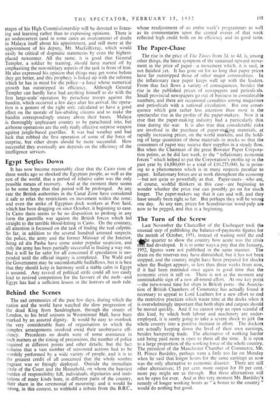The Paper-Chase
The rise in the price of The Times from 3d. to 4d. is, among other things, the latest symptom of the sustained upward move- ment in the price of paper—a movement which, it is said, is not finished yet. It has gone on for so long that paper prices have far outstripped those of other' major commodities. In the inflationary race paper keeps well up with the leaders. From that fact flows a variety of consequences, besides the rise in the published prices of newspapers and periodicals. .Small provincial newspapers go out of business in considerable numbers, and there are occasional casualties among magazines and periodicals with a national circulation. But one conse- quence which gets rather less attention than most is the spectacular rise in the profits of the paper-makers. Now it is true that the paper-making industry had a particularly thin time during the war. It is also true that considerable risks are involved in the purchase of paper-m4jng materials, at rapidly increasing prices, on the world markets, and the hold- ing of large quantities of those materials in stocks so that the consumers of paper may receive their supplies in a steady flow. But when the Chairman of the great Bowater Paper Corpora- tion points, as he did last week, to the " inflationary economic forces " which helped to put the Corporation's profits up in the past year by £4,880,000 to a total of £10,275,000, he is point- ing to a phenomenon which is in many respects peculiar to paper. Inflationary forces are at work throughout the economy —but not quite so powerfully as that. Paper-users—who are, of course, wishful thinkers in this case—are beginning to wonder whether the price rise can possibly go on for much longer. The paper-makers say that it can and will, and they have usually been right so far. But perhaps they will be wrong one day. At any rate, prices for Scandinavian wood-pulp are now to be pegged, and that is a beginning.


























 Previous page
Previous page